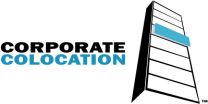The 5 hospital factors that affect heart attack survival
2011-03-16
(Press-News.org) Hospitals in the high- and low-performing groups differed substantially in five ways: organizational values and goals, senior management involvement, broad staff presence and expertise in AMI care, communication and coordination, and problem solving.
"Our research shows that the key facets to safety and quality in hospitals may not be new gadgets," says Elizabeth Bradley, Ph.D., faculty director at the Yale Global Health Leadership Institute, professor of public health and senior author on the paper. "The essential ingredients are not expensive. If we could implement our findings in more hospitals, we could improve quality without adding to costs."
Staff in the best hospitals reported strong communication and coordination across disciplines and departments. In low-performing hospitals, sporadic involvement of senior management was common, in part due to frequent turnover, and management did not create an environment that encouraged taking responsibility for performance problems. Curry says that achieving high performance may require long-term investment and concerted efforts to create an organizational culture that supports full engagement in quality, strong communication and coordination among groups, and capacity for problem solving and learning across the organization.
"What we found was that the best hospitals were distinguished by a combination of factors that related to how they organized and managed the care and the performance of the teams," says Harlan Krumholz, M.D., professor of medicine and cardiology at Yale School of Medicine. "This study begins to address our need to know what it takes to be an outstanding performer."
###
The study was funded by the Agency for Healthcare Research and Quality, the Commonwealth Fund, and the United Fund.
The Global Health Leadership Institute supports health leaders to improve the performance of health systems through leadership development, quality improvement programs, and health systems research. For more information on the AMI study or GHLI, contact: Rosalind D'Eugenio, (203) 436-3649, rosalind.deugenio@yale.edu.
END
ELSE PRESS RELEASES FROM THIS DATE:
2011-03-16
Irrigation is one of the most controversial aspects in the sustainable management of golf courses. Researchers from the Canary Islands have spent 25 years analysing the practices relating to reclaimed water at one of the oldest golf courses in Spain. The results show that plants on the course receive 83% more water than they need.
"Excessive amounts of water are used, and this cannot be justified from any perspective", María del Pino Palacios Díaz, lead author of the study and a researcher at the Department of Animal Pathology, Animal Production and Food Science and Technology ...
2011-03-16
In most states, New Jersey included, all insurance policies have "uninsured motorist protection", and most have "underinsured motorist protection". What does this mean?
Uninsured motorist protection is mandatory in the State. That is, your insurance carrier/agent must include it in your coverage. You can (and should) have coverage limits which match your own liability insurance coverage limits. This coverage protects you in the event that you are involved in an accident which is caused by a driver who has no liability insurance on his car. By some estimates, nearly 2 ...
2011-03-16
New Rochelle, NY, March 15, 2011—Since the first laparoscopic procedure was performed to remove a diseased kidney 20 years ago at Washington University in St. Louis, this breakthrough minimally invasive technique has become the standard of care for surgical nephrectomy. This remarkable achievement is celebrated with a series of cutting-edge articles in Journal of Endourology, a peer-reviewed journal published by Mary Ann Liebert, Inc. (www.liebertpub.com). The issue is available free online at www.liebertpub.com/end
In 1990, all of the technical challenges associated ...
2011-03-16
When most of us think of the perils that present themselves during surgery or hospitalization, we think of surgeons who may make cutting mistakes, or leave objects inside of us. We think of nurses who may give us the wrong medications, or unsanitary conditions that may cause severe infections. But it is entirely possible that the greatest danger lurking within the walls of the hospital is anesthesia.
It is an oversimplification to think that anesthesiologists simply render a patient unconscious at the beginning of the surgery, and then wake him up at the end of the surgery. ...
2011-03-16
(Edmonton) University of Alberta researchers have determined that the influence of northern peatlands on the prehistorical record of climate change has been over estimated, but the vast northern wetlands must still be watched closely as the planet grapples with its current global warming trend.
Northern peatlands, which are a boggy mixture of dead organic material and water, cover more than four million square kilometers. The largest northern peatlands occur in the subarctic regions of Canada and Russia. As peatlands grow they sequester carbon (in the form of carbon dioxide ...
2011-03-16
A U.S. Department of Agriculture (USDA) grass breeder has rediscovered a forage grass that seems just right for today's intensive rotational grazing.
A farmer's report of an unusual forage grass led Michael Casler, an Agricultural Research Service (ARS) geneticist at the agency's U.S. Dairy Forage Research Center in Madison, Wis., to identify the grass as meadow fescue. Meadow fescue has been long forgotten, although it was popular after being introduced about 50 to 60 years before tall fescue.
ARS is USDA's principal intramural scientific research agency.
Casler ...
2011-03-16
WASHINGTON, March 15—In the latest twist on optical knots, New York University (NYU) physicists have discovered a new method to create extended and knotted optical traps in three dimensions. This method, which the NYU scientists describe in the Optical Society's (OSA) open-access journal Optics Express, produces "bright" knots, where the maximum of the light intensity traces out a knotted trajectory in space, for the first time allowing microscopic objects to be trapped along the path of the knot. The method may even, one day, help enable fusion energy as a practical power ...
2011-03-16
Reliant Technology, an EMC and IBM storage supplier, is proud to offer the IBM EXP810 storage upgrades for the IBM DS4000 series, including the IBM DS4800, the IBM DS4700, IBM FastT storage, the IBM DS4500, the IBM DS4300 and DS5020 storage systems, giving customers an affordable option for growth. Reliant Technology offers quality refurbished storage and SAN Hardware from IBM, EMC, NetApp Brocade, Data Domain, and HDS.
The IBM EXP810, otherwise known as an IBM expansion shelf or disk tray, is a 16 slot disk enclosure that allows IBM storage controllers to be upgraded ...
2011-03-16
The researchers are from the National Institutes of Health, collaborating with labs at The Scripps Research Institute and the University of California, San Diego. The finding is published in the March 10 edition of Science Express.
"This is an important step forward — it was impossible until recently to know how this type of receptor is switched on by chemical signals like a tiny machine," said Dr. Kenneth A. Jacobson, chief of the Laboratory of Bioorganic Chemistry in NIH's National Institute of Diabetes and Digestive and Kidney Diseases (NIDDK) and an author on the ...
2011-03-16
The exhaustive audit covered the period September 1, 2010 through February 28, 2011 and was performed by an independent accounting and auditing firm.
Completion of the SAS 70 Type II examination indicates that Corporate Colocation Inc. processes, procedures and controls have been formally evaluated and tested by an independent accounting and auditing firm. The examination included the company's controls related to: Physical Security, Environmental Security and Network Monitoring.
SAS 70 is designated by the U.S. Securities and Exchange Commission (SEC) as an acceptable ...
LAST 30 PRESS RELEASES:
[Press-News.org] The 5 hospital factors that affect heart attack survival




